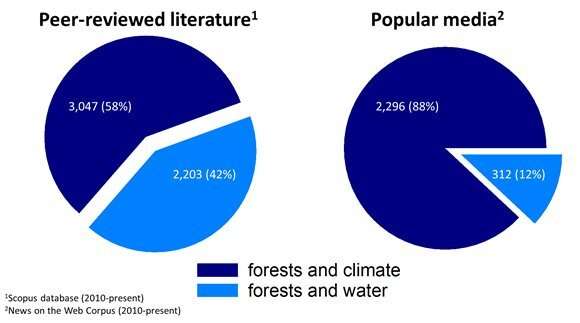Global analysis of streamflow response to forest management

Planting large numbers of trees may contribute to improving an ecosystem and mitigating atmospheric CO2 levels. But planting trees in arid areas can sometimes worsen the environmental circumstances, especially the water availability for people living downstream. Environmental researchers from Utrecht University studied over 400,000 watersheds worldwide. Their results have been published in Nature.
Deforestation and afforestation are widely studied, mostly in terms of climate impact. The effects of forest management on streamflow, however, is less well-known. For over 100 years, researchers have been studying the prediction of streamflow response to forest planting and removal. But until now, the results were exceptionally unclear and largely unpredictable.
First author and environmental scientist Dr. Jaivime Evaristo from Utrecht University and Dr. Jeffrey J. McDonnell from the University of Saskatchewan have compiled the most comprehensive database of worldwide forest cover studies ever made. The database contains details of over 400,000 watersheds located in 137 countries. A watershed is an area of landscape of a particular size where precipitation collects and drains off into a common outlet, such as into a river, bay or other body of water. The researchers created a model that uses seven key landscape factors in order to predict how the streamflow responds to forest planting and removal.

Calculating the non-linear decrease and increase
Using their model, the researchers calculated the nonlinear decrease or increase in streamflow when trees are planted or removed. The most important factor for predicting how the streamflow responds to the removal of trees is the amount of subsurface water stored in the watershed.
An increasing amount of water will be available downstream when trees are cut down in a watershed that has a large amount of subsurface storage. To predict the streamflow when trees are planted, the amount of evaporation and transpiration is the principal factor, the researchers conclude.
People downstream are significantly affected
By and large, planting trees is still beneficial for numerous forms of life. But areas for afforestation must be chosen carefully. In areas already affected by droughts, planting schemes can decrease the flow of water in streams to such an extent that people downstream are significantly affected. For this reason, a law was passed in South Africa that prohibits the planting of forests in certain areas. But in general, successful afforestation can only happen when other water resources are sufficiently available, the researchers conclude.
More information: Jaivime Evaristo et al. Global analysis of streamflow response to forest management, Nature (2019). DOI: 10.1038/s41586-019-1306-0
Journal information: Nature
Provided by Utrecht University


















